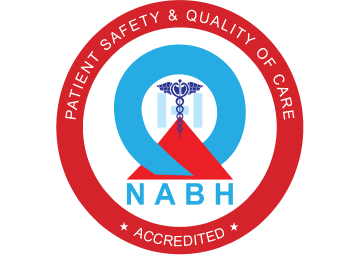SARCOMA CANCER
What is a sarcoma?
- Sarcoma is a type of cancer arising from tissues like Muscle, Bone, Fat, Nerves, Blood vessels, Fibrous tissue and deep skin tissue. They can be found in any part of the body. Most common site is legs and arm. Sarcomas can be widely classified as Bone and Soft tissue sarcoma.
How common is sarcoma?
- Sarcomas are rare tumors that accounts to less than 1% of all cancers. Incidence is 1.5 to 5 per lakh population.
What are the types of sarcoma?
- Soft Tissue Sarcoma
- Bone Sarcoma
Soft Tissue Sarcoma
What are the risk factors for soft tissue sarcoma?
- Idiopathic (Reason not known is the most common cause)
- Previous Radiation
- Chronic long standing Lymphoedema
- Genetic Syndromes
- Chemical industry
What is the common sites of Soft tissue sarcoma?
What are the signs and symptoms of soft tissue sarcoma?
Swelling any where in the body
- Increasing in size
- Not associated with fever, pus discharge or tenderness.
- Pain radiating to leg.
- Vague abdominal symptoms.
What are the test for Soft tissue sarcoma?
- History and examination.
- MRI scan or CT scan
- Core needle Biopsy
- PET scan in very selected situation.
What are the treatments for Soft tissue sarcoma?
- Surgery
- Radiotherapy
- Chemotherapy
- Targeted Therapy.
The primary modality of treatment for sarcoma varies from case to case based on the sub type of sarcoma , location and size of tumor and whether spread to distant site or not.
What are the surgeries for Soft tissue sarcoma?
- Extremity-
- Limb conserving Surgery-
- Amputations
- Abdominal
- Wide excision with or without Multiorgan resection.
- Metastasis – Metastatectomy.
- Extremity
The tumors involving the limbs may be situated away or close to the blood vessels and nerves in the limb. If they are located away, then the excision of tumor with wide margins and conserving the limb becomes easy. If the tumor is located close, even then the conservation of limb is possible with the advances in cancer treatment. Amputation has a very limited role in sarcoma treatment now a days and is indicated mostly in painful and non functional limb.
- Abdominal
Tumors in the abdominal cavity are located in the deeper most part of the abdomen called the retroperitoneum where it can be close to lot of important structures. These tumors need wide excision which may result in multiorgan resection with preservation of important structures.
- Metastatectomy
Some of these sarcoma have tendency to metastasis to lung and other sites. If the disease biology is favorable these lung lesions can be considered for surgical excision called the metastatectomy. Which can be done by key hole or minimally invasive surgery called the thorascopic surgery or VATS.
When will Radiotherapy be necessary?
- Radiotherapy may be given before or after surgery and the sequence will be decided case to case basis. Generally radiotherapy will be needed for any high grade tumor that is greater than 5 cms or in margins of excision are positive.
What are the types of radiotherapy?
There are 2 types of Radiotherpay
- External Beam Radiotherapy- Radiation is delivered from outside the patients body usually IMRT ( specifically designed to tumor bed) is used to reduce the adverse effects of radiation
- Brachytherapy- At the time of surgery tubes are inserted into the surgical bed and are connected to radiation source few days after surgery. This is usually combined with External beam Radiotherapy. This combined modality helps us to deliver high dose of radiotherapy without increasing the adverse effects.
When will Chemotherapy be needed?
Chemotherapy is usually included in the treatment protocol if the tumor is chemoresponsive. Whether to be given before or after surgery depends on the hisopathological type of tumor on biopsy specimen.
5 year survival rate for Laryngeal and Pharyngeal Cancers.
| Type of anaesthesia | General Anaesthesia |
|---|---|
| Surgery time | 2 - 4 hours |
| Hospital stay | 3 - 5 days |
| Mobilisation | 2nd day |
| Suture removal | 12th day |
| Self-care | 1 - 2 days |
| Full recovery | 4 - 6 weeks |
| Return to work | 4 weeks |
What are the Complications expected out of Surgery?
- Bleeding
- Infection
- Seroma
- Lymphoedema
- Deep venous thrombosis
- Small bowel Obstruction( Retroperitoneal)
- Lot of these complications may be reduced by careful planning and meticulous surgical technique.
What is expected in postoperative period?
- Drain tubes will be placed in the surgical bed and will be removed once the volume comes down. After discharge the patient might feel difficulty in walking or using the limb based on the muscle removed during surgery. Hence the patient will be advised to do regular physiotherapy to train the other muscle to improve the outcomes..








What is the chance of cure in Thyroid cancers?
The possibility of survival depends on the cancer stage, site of involvement, grade of the tumour and the patient's compliance with the treatment. The survival of patients with cancer is generally denoted as 5-year survival, wherein the percentage of people surviving at the end of 5years after a cancer diagnosis is noted down. This is given in the tabular column below.
5-year survival rate for Thyroid cancers.
Papillary Follicular Medullary Anasarcoma Limited to thyroid 100% 100% 100% 31% Beyond thyroid or Nodal disease 99% 96% 90% 12% Distant spread 78% 63% 39% 4%
What is TSH suppression therapy?
- TSH ( Thyroid stimulating Hormone) is a hormone produced in the body that helps grow thyroid cancers. This production of TSH can be suppressed by giving higher doses of thyroxine hormones. The TSH level is monitored in frequent intervals, and the dose is adjusted accordingly.
What are the blood test done during Follow up?
TSH ( Thyroid Stimulating Hormone)
- TSH is a hormone produced in the body that can facilitate the growth and spread of thyroid cancers. We would like to keep it at a low level. We would like to monitor this level every 3 months for the first 2 years and then periodically lifelong.
- Thyroglobulin & Anti thyroglobulin antibody These are tumour markers that help to identify thyroid cancer recurrence early.





